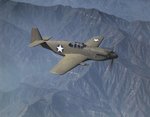Readie
Chief Master Sergeant
How about we stop with the this could do that and that could not do this. Please apply the criteria already established in Posts #1 and #100 to what you think is the best choice and post the results.
Its always good to air views but, you are right. Sorry for the diversion....
Cheers
John

